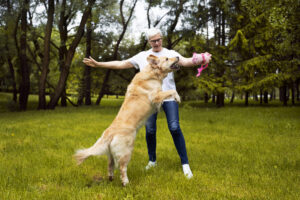Bringing a new pet into your home can be an exciting and life-changing experience. Whether you’re adding a dog, cat, or even a small animal, it’s important to introduce them carefully and thoughtfully to ensure a smooth transition for both your new pet and the existing members of your household, including other pets. A successful introduction can lead to a harmonious home environment, filled with love and companionship for all.
In this guide, we will outline a step-by-step process to help you introduce a new pet to your home, from preparing for their arrival to making the first few days as stress-free as possible for everyone involved.
1. Prepare Your Home for the New Pet
Before bringing a new pet into your home, take some time to prepare the space. Ensuring that your home is pet-friendly will help make the transition smoother for your new companion.
- Create a Safe Space: Whether it’s a dog crate, a designated room, or a quiet corner, having a space where your new pet can retreat to will help them feel safe and secure as they adjust. This space should be equipped with food, water, and bedding, and be free from stressors like loud noises or other pets.
- Pet-Proof Your Home: Make sure your home is safe for a new pet. This includes removing harmful substances, such as toxic plants, medications, or cleaning supplies, and securing any areas that might pose a danger to your new pet, like exposed wires or breakable items.
- Gather Supplies: Ensure you have all the necessary supplies ready for your new pet. For dogs and cats, this might include food and water bowls, bedding, toys, grooming tools, and identification tags. For smaller animals like rabbits, guinea pigs, or birds, make sure you have the proper cages, bedding, and accessories.
- Arrange for a Vet Visit: Schedule an appointment with your veterinarian to ensure your new pet is healthy and up to date on vaccinations. It’s also a good idea to get them checked for any potential health issues that could cause stress or discomfort during the adjustment period.
2. Initial Introduction: Keep Them Separate at First
When you first bring your new pet into your home, it’s important to allow them to settle in and acclimate to their new environment without overwhelming them. This is especially important when introducing pets to existing pets.
- Introduce Gradually: For the first few days, keep your new pet in a separate room from any existing pets. This will give them time to adjust to their new surroundings and start to feel comfortable.
- Scent Introduction: Animals, especially dogs and cats, rely heavily on scent. You can start by swapping bedding or toys between your new pet and existing pets. This allows them to become familiar with each other’s scents without direct interaction, which can help reduce territorial behavior.
- Give the New Pet Time to Settle: Allow your new pet to explore their space and get used to the sounds, smells, and routines of your home. Limit the amount of human interaction in the first few hours to avoid overwhelming them.
3. Introduce the New Pet to Other Pets
The process of introducing your new pet to existing pets can vary based on the species, personalities, and temperaments involved. However, the following general guidelines can help ensure a smoother transition:
For Dogs:
- Leash Introduction: When introducing a new dog to an existing dog, keep both dogs on a leash to ensure control and safety. Start by allowing them to observe each other from a distance, so they can get used to each other’s presence without feeling threatened.
- Positive Reinforcement: Reward both dogs with praise, treats, and calm praise when they display positive behaviors. This can include sniffing each other politely or sitting calmly near each other. Rewarding good behavior encourages them to associate the other dog with positive experiences.
- Controlled Interaction: Once both dogs seem comfortable with each other’s presence, allow them to interact more closely while still on the leash. Keep the first few interactions short, and watch for signs of tension, such as growling or stiff body language. If this happens, calmly separate them and try again later.
- Supervised Playtime: Over time, increase the length of their interactions and allow them to play together in a controlled environment. Always supervise their interactions until you are confident that they are comfortable and safe around each other.
For Cats:
- Slow Introduction: Cats are often more territorial than dogs, so it’s important to introduce them slowly. Start by keeping your new cat in a separate room for the first few days, allowing them to get used to the sounds and smells of the house without direct contact with your existing cats.
- Scent Swapping: As with dogs, you can swap bedding or use a soft cloth to rub both cats and then place it with the other pet. This allows them to become accustomed to each other’s scent before the first face-to-face introduction.
- Controlled Meetings: When you’re ready for the first face-to-face introduction, allow the cats to meet through a baby gate, cracked door, or with a carrier. Keep them separated by a barrier and observe their body language. If they seem calm, allow them to get closer gradually over the next few days.
- Gradual Face-to-Face Interaction: If the cats seem calm during the scent swapping and barrier introductions, you can allow them to meet in the same room. Keep both cats on a leash or in a carrier for added security. Watch closely for any signs of aggression and separate them if necessary.
For Small Animals (Guinea Pigs, Rabbits, Birds):
- Ensure Compatibility: Before introducing a new small animal, it’s important to research the species and ensure they are compatible with other pets in your home. For example, guinea pigs and rabbits may not get along with certain other species, and birds should be introduced carefully to avoid stress.
- Separate Cages: For the first few days, keep the new small animal in a separate cage or enclosure to allow them time to adjust. Gradually introduce them to other pets in your home by placing their cages near each other so they can observe one another safely.
- Supervised Interaction: If you plan to allow small animals to interact outside of their cages, ensure it’s in a neutral area, free from distractions. Always supervise these interactions closely and be ready to step in if the situation becomes stressful for any pet.
4. Establish a Routine
Pets, especially those coming from a new environment, thrive on routine. Establishing a consistent daily schedule will help your new pet adjust faster and feel more comfortable in their new home.
- Feeding Schedule: Keep feeding times consistent and in the same area each day. If you have other pets, ensure each pet has their own designated feeding space to prevent any food-related aggression.
- Play and Exercise: Regular playtime and exercise help your new pet burn off energy and reduce stress. Ensure you are meeting the physical and mental stimulation needs of all your pets.
- Training and Socialization: Use positive reinforcement to train your new pet and help them adjust to your household rules. Start with basic commands or litter box training (for cats or small animals) to reinforce a sense of structure and control.
5. Monitor Behavior and Address Issues Early
The first few weeks after introducing a new pet to your home can be challenging, as both the new pet and the existing pets adjust to the change. Keep an eye on their behavior and make sure they are settling in well.
- Watch for Signs of Stress: Monitor your new pet’s behavior for signs of stress, such as hiding, excessive barking or meowing, or changes in appetite. If your new pet is struggling to adjust, consider consulting with a vet or animal behaviorist for advice.
- Intervene Early: If any aggressive or fearful behavior arises, intervene early by separating the pets and slowly reintroducing them over time. It’s important to avoid forceful interactions that may cause long-term stress or harm.
Conclusion
Introducing a new pet to your home can be an incredibly rewarding experience, but it requires patience, care, and attention to detail. By preparing your home, making gradual introductions, and monitoring their behavior, you can help ensure a smooth and successful transition for everyone involved. Whether you’re introducing a dog, cat, or small animal, the key to a successful introduction lies in being mindful of each pet’s unique needs and temperaments and providing them with the support they need to feel safe, secure, and loved in their new environment.






